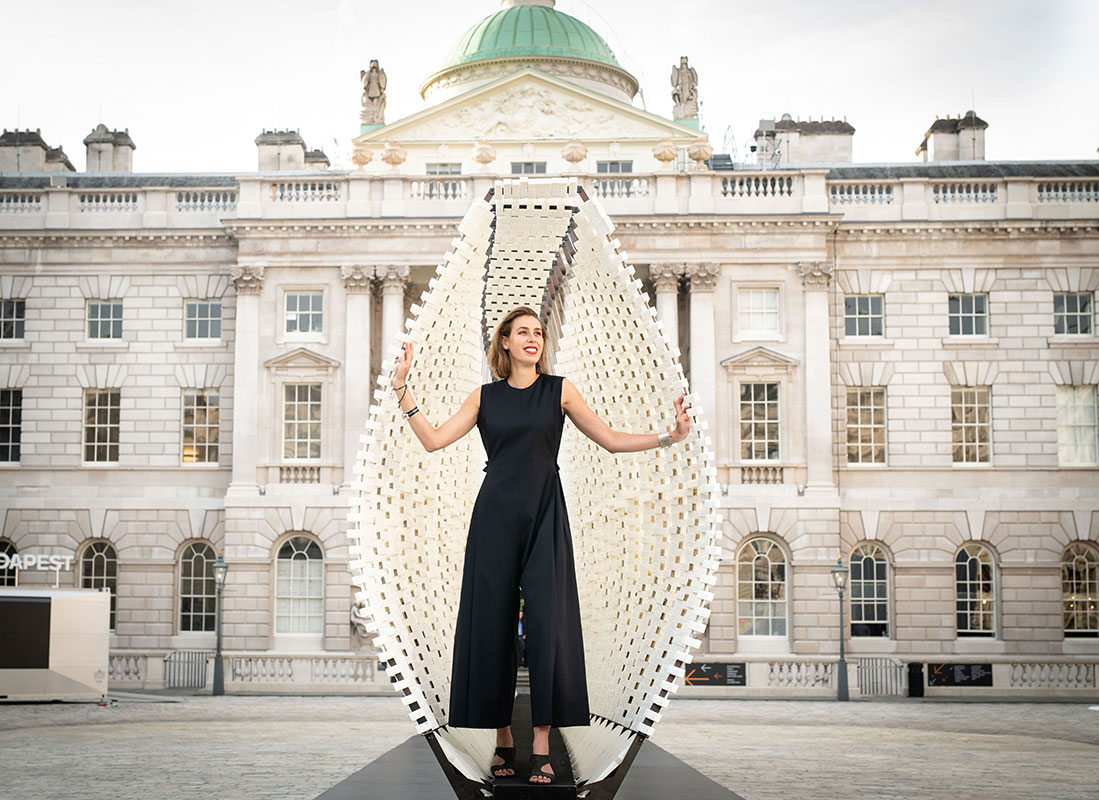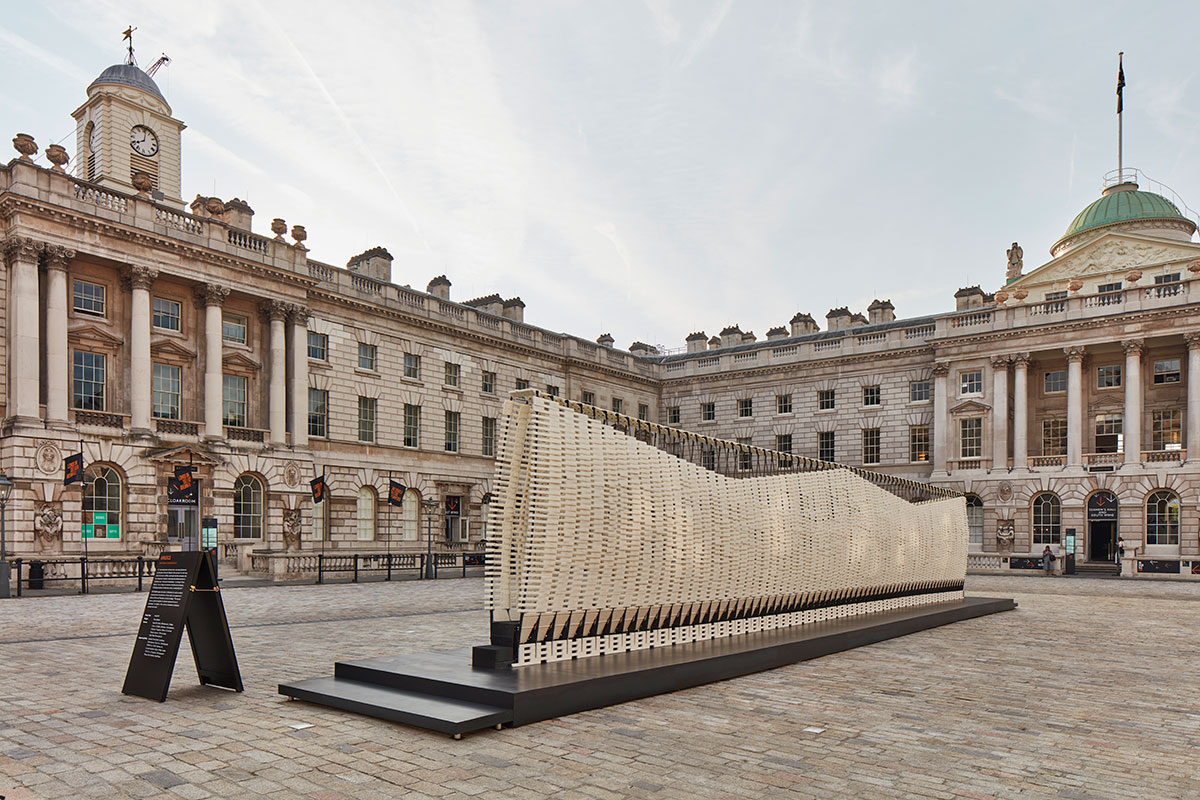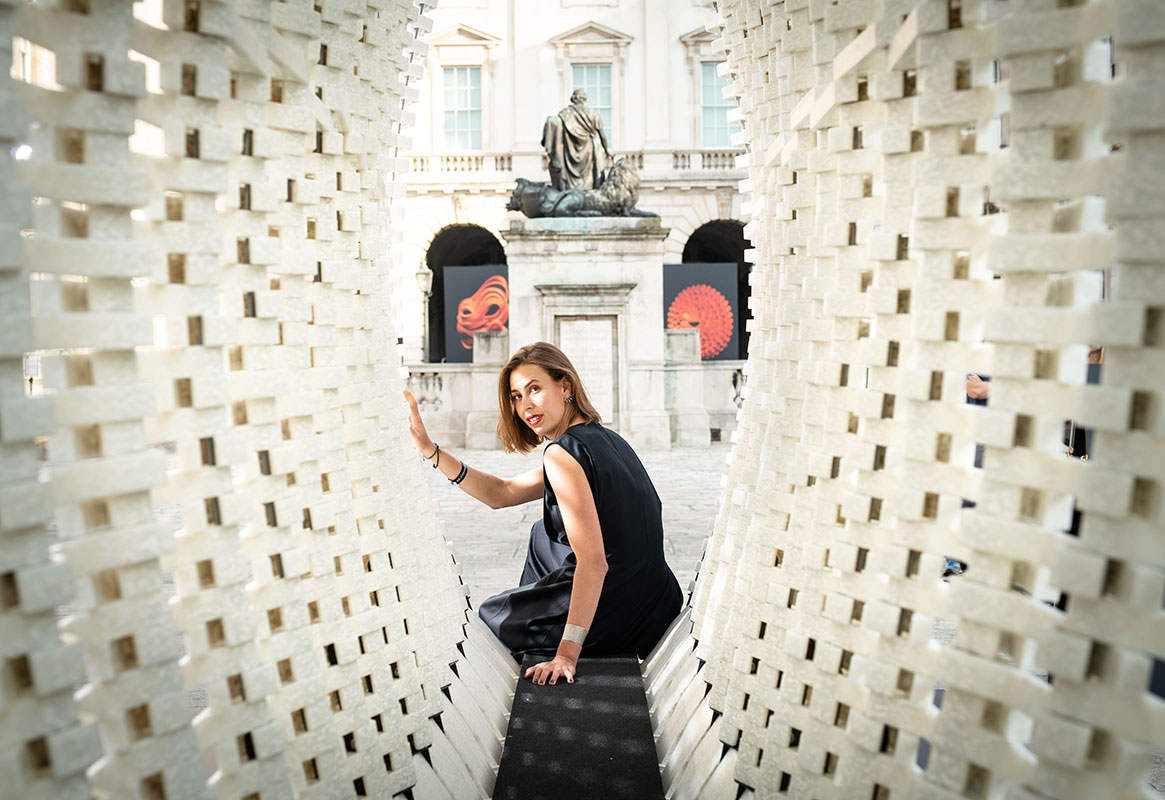This website uses cookies so that we can provide you with the best user experience possible. Cookie information is stored in your browser and performs functions such as recognising you when you return to our website and helping our team to understand which sections of the website you find most interesting and useful.
Artist Nassia Inglessis celebrates creative disobedience at the London Design Biennale
By Michelle Johnson | 17 September 2018 | Culture, Lifestyle
Somerset House’s courtyard hosts the ground-breaking work of Greece’s lead designer and curator

Representing Greece at this year's prestigious London Design Biennale, artist and designer Nassia Inglessis has delighted critics and members of the public alike with the daring, skilfully engineered walkway that dominates the courtyard of London's Somerset House. Spanning 17 metres, the hollow, undulating walkway encourages guests to move through and change the shape rather than walk the expected line.
Such is the nature of Inglessis' sense of 'Disobedience', as the piece is named. Audiences become a disobedient actor rather than an obedient spectator, physically passing through the walls of the art, and uniquely impacting its shape. To her, the emotional state and physical actions are a necessary creative force in science and art, and in society. "It's about progress," she tells Tempus during the Biennale.
Raised in Athens, Nassia trained as an engineer at Oxford University before founding an experiential design studio, Studio INI, in 2014. Inglessis' artistic focus lies in experimental design that conveys a human-centric approach to our environment, rather than looking at what she refers to as 'static architecture', and her work has been exhibited at the Victoria & Albert Museum, Triennale di Milano, MIT and more.
Following her role at Somerset House, Inglessis is looking forward to working on an exciting new exhibition in the coming months – one she describes as "top secret". Here, she speaks to Tempus about the benefits of breaking the rules.
Nassia you are lead designer and curator for Greece at the London Design Biennale. What does this role involve?
It’s a brilliant opportunity to shine a light on the design and creative scene back home, Greece is full of young people ready to cut their teeth on the global stage, and this is just the beginning. I work between Athens and London – Athens is where I go to try out my craziest ideas, I find room for maverick creativity and experimentation there, while London in its endless diversity is my place for inspiration and debate. >>
Related: V&A Museum to host the UK’s biggest ever Christian Dior exhibition next year

Your piece at Somerset House, ΑΝΥΠΑΚΟΗ, means disobedience – what was the inspiration?
For the past 10 years, since the economic crash, being Greek has been synonymous with the bad side of disobedience. Corrupt politicians, anarchists rioting – these are hackneyed stereotypes which give an unfair portrayal of what is truly Greek. So with this installation I wanted to show disobedience in more of a Promethean sense, disobeying for the progress of humanity and creativity. Disobedient in the way that we derive new ideas and innovations by shunning what has come before.
What does creative disobedience mean to you?
It means having a new idea, being told that it will be impossible to make, and then going ahead and making it. The result of this process is our installation ΑΝΥΠΑΚΟΗ.
The theme of the Biennale is emotional states. What do you hope audiences will take from your work?
I think the biggest suprise has been the diversity of the audiences that the piece has attracted, from designers to toddlers to academics. The emotional response has been fantastic. It has been called a whale’s rib cage, a giant snake that engulfs and digests you, a womb for rebirth, and a time and space warp.
Why is it important that your sculpture is interactive? What does it tell us about how we relate to our environment?
My motivation is to propose new ways of interacting with our physical environment by disobeying the notion of architecture being static or rigid. Only through the opportunity of direct interaction can I share this idea with the public. In this interaction I offer the sense that by stepping out of the preset or archetypal interaction, they can break reality outside of the computer screen. There is a sense of wonder in the ability to create space where there should not be space, a sense of empowerment in the ability to reconstruct the physical environment, break barriers, dissolve walls by movement, intent and emotion. We essentially present the visitors with the archetype of a wall, yet a wall that they deform just by their physical presence. What opportunities could this present for architectural or structural vernaculars in the future? >>
Related: Rediscover the glittering era of Viennese modernism with the Royal Academy

Who are your inspirations?
As a designer, a lot of my inspiration behind exploring the dialogue of body and space has come from the late Bauhaus artist, Oskar Schlemmer, whose 130th birthday fell on the public opening of London Design Biennale this year!
Before becoming an artist you trained as an engineer. How vital has this passion and expertise been to your work?
Being an engineer really gave me the confidence to go and work with new technologies and materials. It gives you a strong methodology for dealing with new and sometimes complex industrial ideas, and remaining involved and hands-on in the whole process of creation of a piece from concept to completion.
Is there a moment of intersection between the two worlds of art and science? Where does one end and the other begin, for you?
I actually don’t see them as different, they are one and the same, both are driven by discovery, communication and creative disobedience. A drive to change perspectives and break assumptions to replace these with discoveries of how things are or will be.
London Design Biennale runs until 23 September







